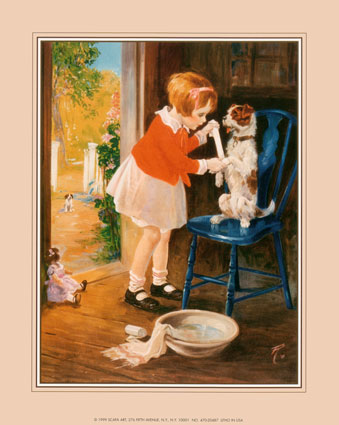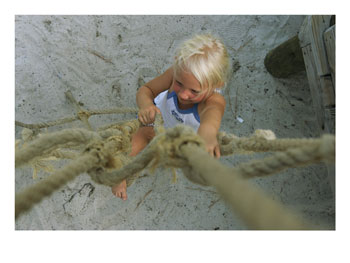Trying to keep preschoolers safe, without quashing their need to learn through hands-on exploration, can seem an unending and utterly nerve-wracking exercise in disaster management. Most parents of preschoolers baby-safe their homes before the onslaught of crawling, walking, running and climbing (all coming in quicker succession than seems possible), which is likely the best approach. However, it is good to occasionally do a re-check of your home’s safety.
 Here are nine safety tips every parent of a preschooler needs to ensure the home is safe:
Here are nine safety tips every parent of a preschooler needs to ensure the home is safe:
Home Safety Tip #1 – Gates are Great
Table of Contents
Nearly everyone with preschoolers in the house uses baby-gates, proven over time to be one of the easiest control and accident-prevention methods available. Pressure-mounted gates are usually best for between rooms or at the bottom of stairs, with wooden gates recommended for the top of stairwells (where they can be properly affixed to walls and banisters).
There are gates designed to surround the fireplace, keeping children at a safe distance not only from the fire but also from being too close to the heat. Obviously, fireplace gates are not at all the same thing as fireplace screens, the standard fireplace accessories that keep sparks from shooting out onto the floor.
Similarly, you may wish to gate off floorboard heaters and wall radiators. One father spoke of his absolute horror when he found his three-year-old sitting on the floor, next to the cool heater (in summer) – the little boy’s hand was dripping with blood. He’d been poking his hand into the razor-sharp interior coil of a floorboard unit.
Most gates are portable and can be moved from room to room (or to grandma’s house when you’re visiting).
Home Safety Tip #2 – Window Guard Prevention
With second story bedrooms the norm, and apartment living a fact of life, preschoolers constantly run the risk of falling from windows. Although suction-cup window stoppers are a nice-to-have first line of defense, properly installed aluminum or steel bar window guards are a security feature recommended by many states for homes with children ages six and under.
It is imperative to understand that window screens – those meant to keep insects out – are not a window guard. They are not meant to hold the weight of a child – nor will they.
Like baby-gates, window guards only stop toddlers – not older children or adults – from getting out, so are not a hazard in the event of a fire or other emergency evacuation.
Home Safety Tip #3 – Your Outlets are Showing!
If you’re the kind of person who likes to do something once and never has to bother with it again, then you’ve likely replaced your standard electrical outlet covers with sliding panel covers. These kid-safe faceplates have spring-loaded sliding doors that cover the receptacle holes when not in use – and you don’t have to keep track of the little plastic insert plugs (which can also be choking hazards).
Although some parents swear that their preschoolers can bypass any security system (it’s the adults who have trouble), you may still prefer the “safe plates” if only based on the parenting law of averages – the one time you forget to replace the lamp/kettle/whatever plug with the plastic insert plug, your toddler will know and stick something in.
Home Safety Tip #4 – Locks and Bells
Keep your doors (front, back and side) locked – with a baby-safe lock up high and out of reach. Doorknob covers are another option, but may not fit every door handle.
 One older couple recalls vividly, to this day, every long minute of the morning that their preschool son disappeared. He’d unlocked the front door of their home, took the car keys and woke up the entire neighborhood, cheerfully honking the horn in the (previously locked) family car.
One older couple recalls vividly, to this day, every long minute of the morning that their preschool son disappeared. He’d unlocked the front door of their home, took the car keys and woke up the entire neighborhood, cheerfully honking the horn in the (previously locked) family car.
An easy “alarm system”, as a back-up to the inevitable time that your preschooler will drag a chair to the door and unlock even the highest lock, is a simple bell or noisemaker. There are adhesive-backed battery-operated alarms for the truly desperate, although you may wish to warn your break-out artist about this one. Most alarms are startlingly loud, and can really scare a young child.
Home Safety Tip #5 – Padded Rooms
Sharp corners can’t always be avoided, but they can be covered up with corner pads. You’ll need to add to your collection as your preschooler grows. The first furniture that gets the treatment is usually in the living room when baby starts walking – coffee tables and end tables are great for beginning walkers to hang on to, but sharp corners can cause bruising or worse when baby falls.
Once your child is running through the house, higher corners are at eye-level, such as kitchen counters, bookshelves, and some window ledges. Bedroom furniture in the child’s room as well as the parents’ should be corner-padded.
Home Safety Tip #6 – Push it Back and Strap it All Down
Preschoolers are strong – as long as they have leverage, they can push a television or computer right to the edge its stand, and bring it crashing down. The potential for harm is obvious, but pretty easy to prevent with adhesive-backed products that anchor items (of up to 100 lbs) to shelves, stands, and tables.
One safety rule that doesn’t require the use of super adhesives (which, by the way, will likely stay on your furniture forever), is the “push it back” rule. Just make it a habit that hot water kettles and coffee makers are placed as far back on the kitchen counter as possible (and shove the toaster and microwave there too).
When you’re enjoying a cup of coffee or tea, you probably automatically place it in the center of the table – never at the edge. Better make sure your childless friends follow these simple safety rules when they visit or babysit.
Home Safety Tip #7 – Childproof Cupboards
A surprising number of parents hate the very sight of the little plastic mechanisms that are supposed to keep kids out and let adults in to cupboards, closets and medicine chests. That’s usually because it’s the parents who can’t open the doors, while they find their preschoolers happily unloading the contents all over the floor.
However irritating they might be, cupboard safety latches tend to serve their purpose. At the very least, they slow down determined toddlers long enough to make the silence of concentration alarming to the parent.
As a further precaution, make sure that you have childproof bottle caps secured within your childproofed cupboards.
Home Safety Tip #8 – Hang On to Your Bookshelves!
Preschoolers climb, and shelves topple. Using long screws, bookshelves and other freestanding units need to be secured to the floor or walls. Some chests of drawers and dressers are quite top-heavy and should be checked for stability. Don’t overlook child-size bookshelves, which ought to be fastened firmly in place to prevent accidental tip-overs.
Home Safety Tip #9 – Wire Wraps
Even after you’ve safely navigated the “everything in the mouth” stage, loose electrical cords can prove hazardous. One preschooler accidentally got caught up in a dangling cord when passing and ended up with a kettle of boiling water in her face.
From wire covers that hide extension cords (they look like molding running along the baseboard) to baskets that attach under desk and countertops (neatly keeping cords out of sight and reach), there are safety solutions for every situation you’re likely to have. And you won’t have to resort to duct taping your entire house!
Preschooler safety is something we’re all concerned with. With preventive steps as basic as storing cherished knick-knacks until the kids are older, you keep both precious bundles safe from harm.
